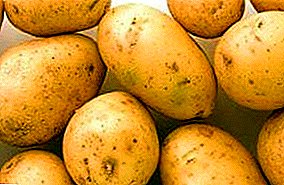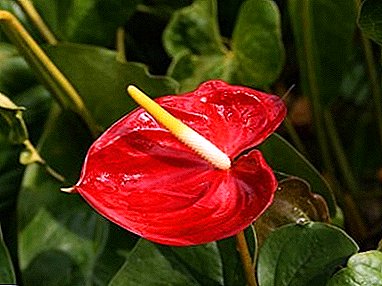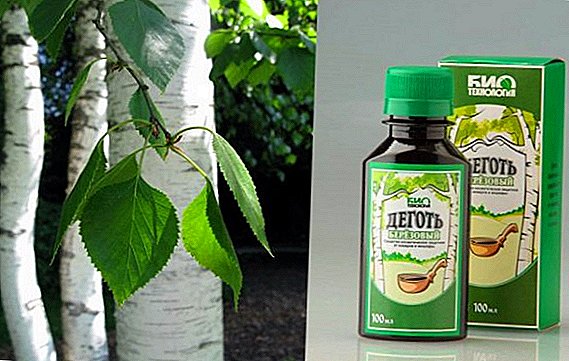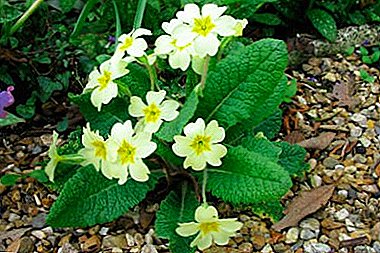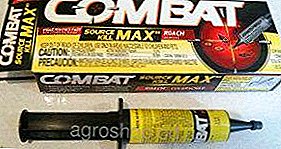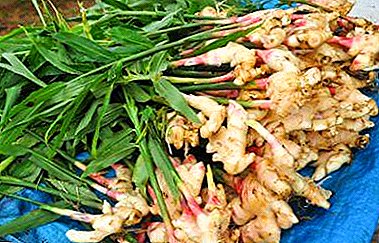
Not all vegetable crops able to grow immediately in the open field. Many of them require special conditions. But growing plants in a greenhouse requires special skills and knowledge.
Getting good harvest in greenhouse conditions - it is quite difficult. But the results of competent cultivation and care not long in coming. And this shows a number of advantages.
Pluses greenhouse growing
- Early harvestat the beginning or middle of summer.
- The ability to sow seeds of different cultures and species, not limited to the characteristics of the local climate.
- Growing your own seedlings in large quantities, which significantly saves the family budget.
- Resistance to late blight.
- Independence from weather conditions.
If the greenhouse is well equipped and heated, then vegetable crops can be grown for a whole year, which gives an additional plus. How to grow seedlings in the greenhouse, consider below.
Choice of cultures
 From the point of view of gardeners, the greatest flowers are popular, then descending greens, vegetables, mushrooms and berries.
From the point of view of gardeners, the greatest flowers are popular, then descending greens, vegetables, mushrooms and berries.
Flowers
In the greenhouse you can grow indoor or garden flowers. For garden flowers are no longer important conditions, and the timing of their implementation. After cutting them the presentation is sharply declining. Houseplants require much more attention and individual conditions and care, but have long-term implementation.
Greenery
Greenery grow much easier. Planting dill, parsley, scallions and cilantro can be both for yourself and for sale. Planting in the greenhouse seedling greens, high costs and does not require, but the market is in demand all year round. The main care is to maintain a certain temperature and the obligatory lighting up to 12-14 hours.
Vegetables
The disadvantages of greenhouse cultivation for vegetables can be attributed only to the fact that not all crops can grow together, since the requirements for the soil and temperature conditions of vegetables are different.
What is profitable to grow?
- Radish and Chinese cabbage - unpretentious cultures, but the main advantage is that they produce several harvests a year.
- Cucumbers. They take more space than Peking cabbage, but at the same time more expensive and more in demand.
- Tomatoes and sweet peppers. These cultures require special treatment and competent care. Growing more than two harvests per year is difficult, given the long growing season.
- Mushrooms and berries. This direction can significantly expand the source of income for the farmer, if properly organize the cultivation of strawberries or mushrooms.
Greenhouse options
Greenhouses are divided into types depending on the material from which the frame is made and the coating used.
Film
Pros:

- the cheapest option;
- ease of constructionnot requiring special skills;
- lack of need for a foundation.
Minuses:
- fragility and need to update every year coating;
- framework, not able to exist more than two seasons.
Reinforced film is more durable and resistant to wind, snow and frost.
Glass
To cover greenhouses glass is an excellent materialdue to the high light transmission and thermal insulation.
The disadvantages of glass greenhouses include:
- the fragility of the glass coating;
- excessive heating inside the greenhousethat adversely affects the development of certain cultures;
- the complexity of the glazing;
- glass requires a very strong frame.
Polycarbonate
- polycarbonate is stronger than film and glass coatings;
- lightweight material;
- good light transmission and heat insulation;
- polycarbonate the coating is durable;
- simple installation and attractive modern look.
The size of greenhouses may be different depending on the purpose and scale of the seedlings grown in them. For individual use completely suitable construction size 3x8. Height, width and length can vary depending on the needs and number of plants planted.
If growing in a greenhouse is necessary for business purposes, then 20x5 meters is what you need. But here the sizes can be much larger, based on the scale of the greenhouse business and the crops grown.
Greenhouse location
 When choosing a place where the greenhouse will be installedThe following factors should be considered:
When choosing a place where the greenhouse will be installedThe following factors should be considered:
- Features of the local landscape. This refers to the slopes, the groundwater level, the proximity of water bodies.
- The location of the building relative to the light. For successful cultivation of seedlings in a greenhouse, you should take care that nothing prevents direct access of sunlight to the greenhouse. Therefore you should not have it near houses, trees and the fence.
- Convenient location. Plant care will require communication, convenient entry and driveway.
- The soil. If possible, in order to do without imported soil, the soil in the place of the greenhouse should be chosen with special care.
Landing dates
Seedlings for the greenhouse - when to plant? Clear certain deadlines planting seedlings in the greenhouse not. It all depends on a number of factors such as:
- optimal soil conditions and air temperature in the greenhouse;
- individual indicators of each culture;
- seedlings readiness indicators, which are usually determined by the color of the leaves and stems;
- cold resistance of different varieties, which speaks of resistance to temperature changes.
If the greenhouse is unheated, then in April you can land:
- Greenery
- Beijing cabbage
- Salad
- Radish
The remaining cultures are planted under the following conditions:
Cucumbers and eggplants will not slow down their development when the soil warms to 18 ° C during the day and 16 ° C at night. Tomatoes and peppers are more cold-resistantthey need 15 ° C during the day and 14 ° C at night. When to sow seedlings for the greenhouse? The approximate dates of planting seedlings in the greenhouse in central Russia:

- Tomatoes - May 1-10;
- Cucumbers - May 10-15;
- Eggplant - in early June;
- Pepper - the end of May.
General guidelines for planting seedlings are temperature measurement is not only airbut also the soil.
A common mistake of novice gardeners is to control in the greenhouse only the temperature of the air, without considering the heating of the soil.
Age of seedlings for transplantation
When to plant seedlings for planting in the greenhouse?
Cucumbers well tolerate landing at the age of 20-23 days. You can understand that a plant is ready for transplantation by the presence of two or three leaves.
Tomatoes must stand in cups at least 45 days. A mature seedling has a well-developed stem 30 cm in height, a root system, from 6 true leaves and, if possible, a floral brush.
Age threshold for peppers not less than 70 days. Ready seedlings of peppers looks like this: 8 leaves, 25 cm tall and flower buds.
Eggplant forms flower buds usually after landing on a permanent place. Understand the readiness of the plant can be on a thick stalk and 6-7 leaves. Age of seedlings about 50 days.
Care and landing
How to grow seedlings in a greenhouse? Departure begins with preparation for disembarkation. For this seedlings are quenched in two weeks. If the plants grow on the windowsill, then open the window and keep for a long time. With the onset of sunny days cups of seedlings carried out into the air, gradually increasing the number of hours.
Pre-prepared the wells in the greenhouse shed water so that there is a semblance of liquid mud. If the seedlings are well formed, then it should not be deeply buried. This should be done only if the plants have overgrown or stretched. Watering immediately does not need to avoid the formation of a crust on the surface. Soil should be mulched, and the layer should be about 5 cm.
A certain humidity is maintained in the greenhouse due to the greenhouse effect, therefore daily watering will be superfluous. Leaves that touch the ground must be removed.
 Sowing seedlings in a greenhouse should not be too thick, so that the plants do not interfere with each other. Ideal if every leaf is illuminated by sunlight.
Sowing seedlings in a greenhouse should not be too thick, so that the plants do not interfere with each other. Ideal if every leaf is illuminated by sunlight.
First two weeks only need to maintain the temperature and in time to loosen the soil. Watering resumes after 1.5-2 weeks. Water for irrigation should not be cold.
Watering should be plentiful and infrequent.. When the first ovary appears, it is necessary to water twice a day and in small portions. After three weeks produce the first dressing. The composition of the fertilizer depends on the type of crop planted.
With all the apparent complexity, growing seedlings in the greenhouse for themselves, and with the right approach and for sale, it is quite real. The main thing, follow all generally accepted rules and standards for the care of greenhouse plants.


